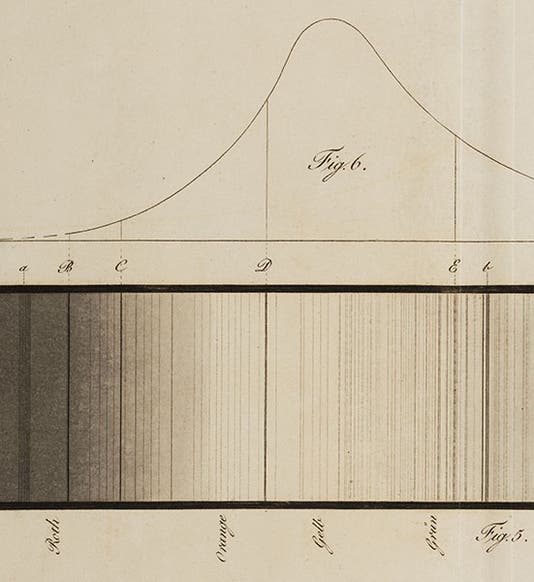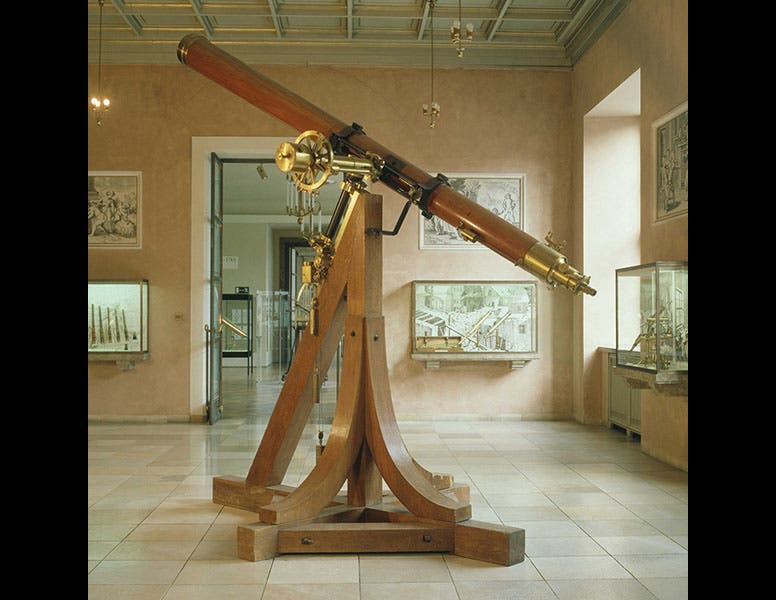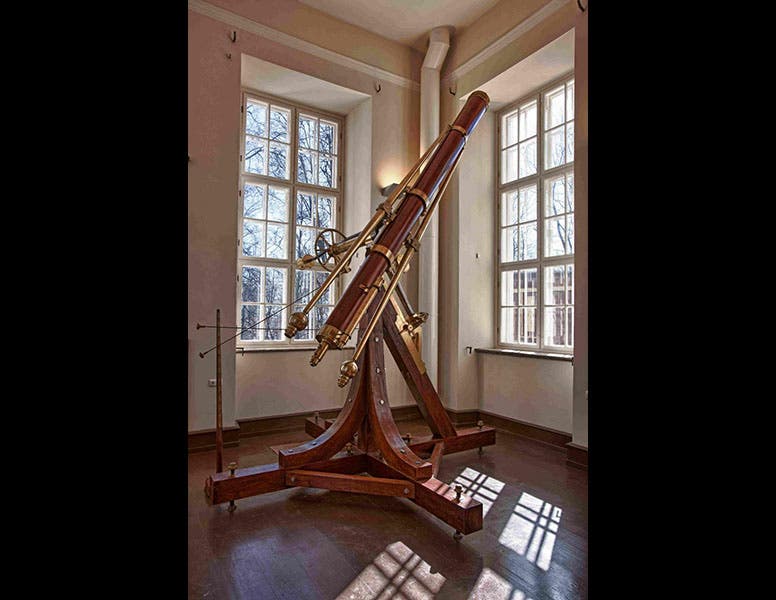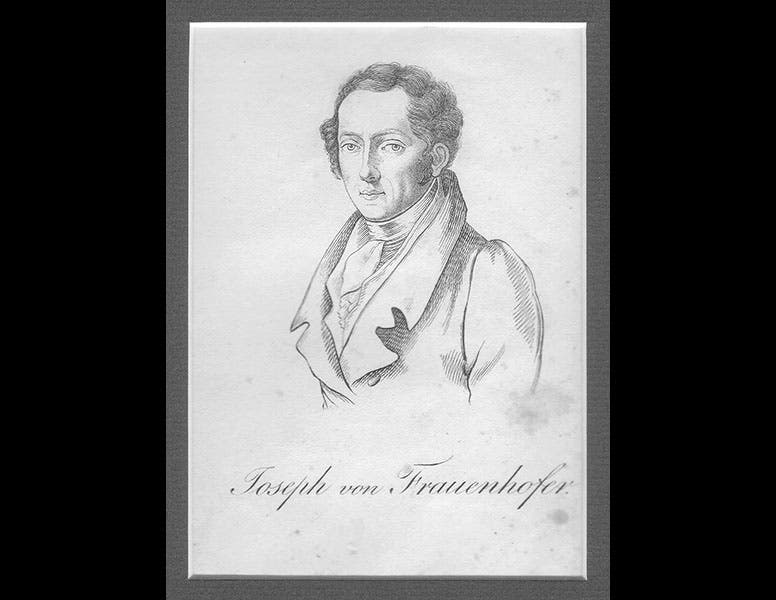Scientist of the Day - Joseph Fraunhofer
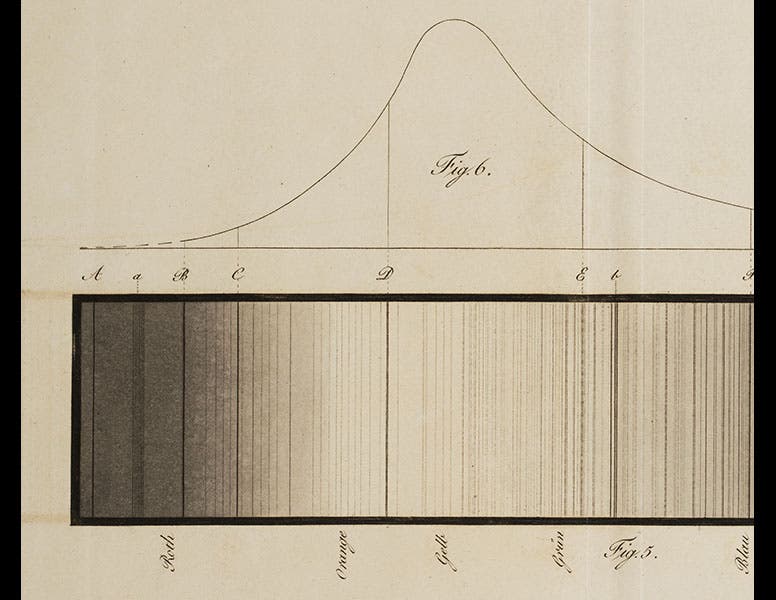
Linda Hall Library
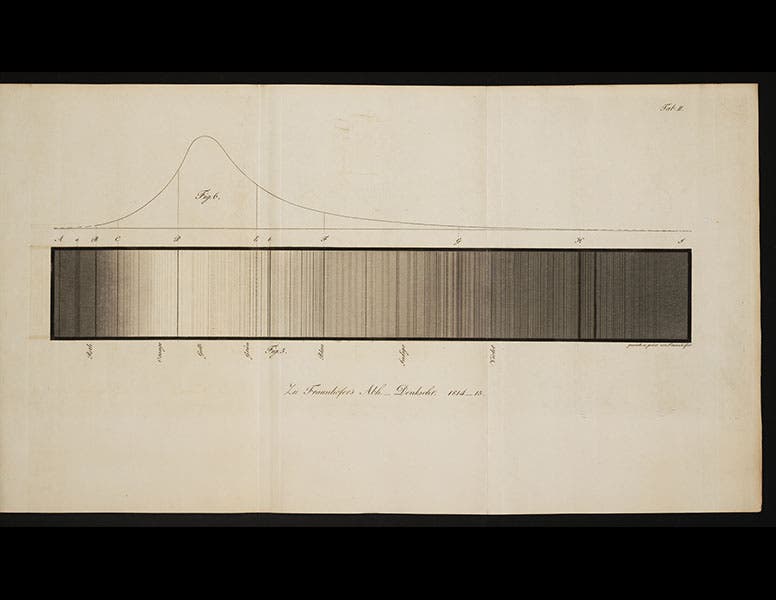
Linda Hall Library
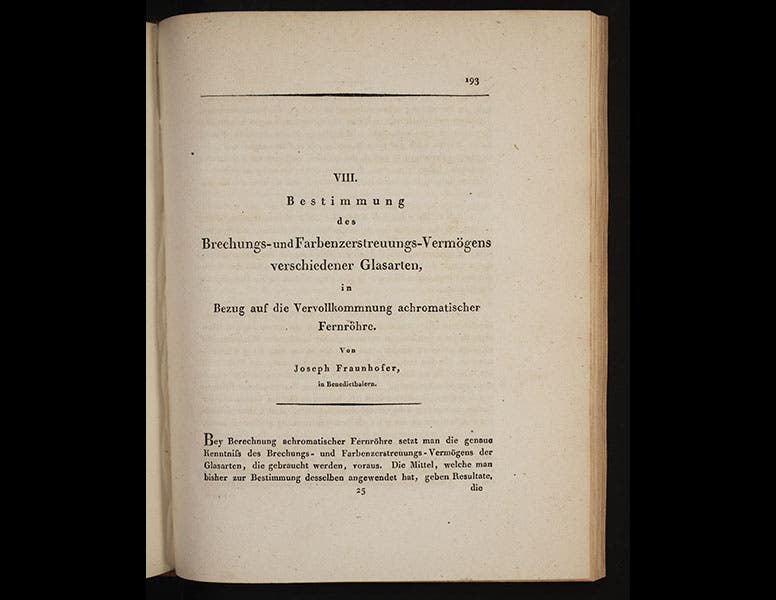
Linda Hall Library
Joseph Fraunhofer, a German optician, was born Mar. 6, 1787. During his own lifetime, Fraunhofer was renowned for making some of the best refracting telescopes in the world. While some astronomers, and most of the general public, were impressed by the light-gathering capacity of the large reflectors being built by William Herschel, other astronomers realized that there was still a place for the mid-sized refractors, provided the lenses were truly achromatic and provided that they came on mounts that were extremely stable. Such refractors could make precision measurements that were beyond the capabilities of large reflectors. Fraunhofer's optical company in Munich made such telescopes, and they were purchased by some of the foremost observatories in Europe. The Fraunhofer telescope in Berlin was the instrument used to discover Neptune in 1846. It is still there (fourth image), as is the 9" Fraunhofer refractor (fifth image) that went to Dorpat Observatory in Estonia (now called the Tartu Observatory). Another of Fraunhofer’s telescopes was used by Friedrich Bessel in 1838 to measure the parallax of a star, thus allowing the first determination of a stellar distance.
But today we celebrate a Fraunhofer discovery that it took a later generation to appreciate. In 1815, Fraunhofer delivered a paper to the membership of the Munich Academy of Sciences. He had discovered that if you allow a beam of sunlight to pass through a narrow slit, and then through a prism, the resulting color spectrum is interrupted by hundreds of black lines of varying thickness and intensity. When he published his paper in 1817, he included a folding engraved plate (second image) depicting the spectrum of the sun, complete with all the dark lines, and he labeled the more prominent lines with Roman letters--assigning, for example, the letter "D" to a dark double-line in the yellow part of the spectrum (detail, first image). In 1859, long after Fraunhofers's death in 1826, it was discovered (by the chemists Gustav Kirchhoff and Robert Bunsen) that the dark lines were in effect the signatures of the various chemical elements that make up the sun, so that the Fraunhofer D-doublet indicates the presence of sodium in the sun, while other lines identify hydrogen, oxygen, iron, etc. The science of spectroscopy was born, and along with it, astrophysics. Fraunhofer did not invent spectroscopy, but he was certainly the muse present at its discovery. The dark solar lines are still referred to as Fraunhofer lines, in honor of their discoverer, and the D line is still the D line.
Many years ago, we mounted a surprisingly successful exhibition at the Library called “Forty Landmark Articles,” for which we tried to select the 40 most seminal papers published in scientific journals in the previous 325 years. Joining company with Isaac Newton’s paper on light and Albert Einstein’s paper on special relativity was Fraunhofer’s paper on the dispersive power of light, with its splendid fold-out spectrum, as it appeared in vol. 5 of the Denkschriften of the Munich Academy of Sciences (third image).
Dr. William B. Ashworth, Jr., Consultant for the History of Science, Linda Hall Library and Associate Professor, Department of History, University of Missouri-Kansas City. Comments or corrections are welcome; please direct to ashworthw@umkc.edu.

